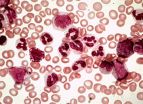(Press-News.org) AUSTIN, Texas — Landscapes with large amounts of paved roads and impervious construction have lower numbers of ground-nesting bumblebees, which are important native pollinators, a study from The University of Texas at Austin and the University of California, Berkeley shows.
The study suggests that management strategies that reduce the local use of pavement and increase natural habitat within the landscape could improve nesting opportunities for wild bees and help protect food supplies around the word.
The study also suggests that increasing the number of species-rich flowering patches in suburban and urban gardens, farms and restored habitats could provide pathways for bees to forage and improve pollination services over larger areas.
The findings have major implications for global pollinator conservation on a rapidly urbanizing planet.
"We are potentially in a pollinator crisis," said Shalene Jha, lead author and assistant professor of biology at The University of Texas at Austin. "Honey bees are declining precipitously, and wild bees have also been exhibiting population declines across the globe. Native bees provide critical pollination services for fruit, nut, fiber and forage crops. Understanding how bees move around the landscape can help us both preserve biodiversity and improve crop yields."
Animal pollination is estimated to be worth over $200 billion in global crop yields.
For the research, published in the journal PNAS, Jha and senior author Claire Kremen, a professor at UC Berkeley's Department of Environmental Science, Policy and Management, studied a native California bumblebee, Bombus vosnesenskii, in habitats across exurban areas, farms and nature reserves.
In addition to finding that pavement negatively affects the bees, the scientists discovered that:
Bees will move longer distances to find patches of flowers that are rich in species; it's not floral density that determines how far a bumblebee will fly, but floral diversity.
Bees will also forage further away from their home nest if the surrounding landscape is less heterogeneous. "In some ways, it's a bet-hedging strategy," said Jha. "If the landscape is composed of consistently dense flowering patches, bees take a risk and forage farther afield to find species-rich patches."
"In combination with earlier work showing that bumblebees have become rare in agricultural landscapes, our study suggests that farmers could promote these valuable pollinators by diversifying crop types and by planting cover crops and flowering hedgerows to enhance floral diversity," said Kremen.
Though it may seem obvious that pavement and ground nesting don't mix, Jha said that our understanding of the effects of pavement and urban growth on native bees has been largely anecdotal.
"Using genetic tools, we can now estimate the number of colonies in an area," said Jha, who began this work as a postdoctoral researcher at UC Berkeley. "This is helping us better understand how wild pollinators live and move across large, diverse landscapes."
Bumblebees nest in the ground, and each colony contains a queen and a force of workers. As with honeybees, all of the bumblebee workers are sisters who spend some of their time flying around searching for flowers from which to collect pollen and nectar to feed the larvae back in the hive.
Unlike honeybees, which are not native, bumblebees do not make harvestable honey. They do, however, provide important pollination services to plants.
"Bumblebees are among the most effective native pollinators," said Jha. "They are large and can carry a lot of pollen. They also vibrate or 'buzz' flowers with their bodies and thus are excellent at extracting pollen and moving it from plant to plant."
To study the bumblebees, Jha did not scour the landscape for nests in the ground, which has proved in the past to be very difficult, especially over large areas. Instead, she analyzed the genetic relatedness of bees foraging in the landscape.
If bees collected in an area were genetically identified as sisters, they came from the same colony. Unrelated bees came from different colonies. Jha used this information, plus the bees' locations, to estimate the number of bee colonies in an area and determine how far afield the individual bees were foraging.
INFORMATION:
Additional contact:
Claire Kremen
University of California, Berkeley
510-367-2100
ckremen@nature.berkeley.edu
Bumblebees do best where there is less pavement and more floral diversity
2012-12-25
ELSE PRESS RELEASES FROM THIS DATE:
NYU biologists identify proteins vital to chromosome segregation
2012-12-25
New York University biologists have identified how a vital protein is loaded by others into the centromere, the part of the chromosome that plays a significant role in cell division. Their findings shed new light on genome replication and may offer insights into the factors behind the production of abnormal numbers of chromosomes.
Their findings appear in the latest issue of the journal the Proceedings of the National Academy of Sciences.
The researchers focused on the organization and functioning of the centromere, which is responsible for chromosome segregation—a ...
Enzyme accelerates malignant stem cell cloning in chronic myeloid leukemia
2012-12-25
An international team, headed by researchers at the University of California, San Diego School of Medicine, has identified a key enzyme in the reprogramming process that promotes malignant stem cell cloning and the growth of chronic myeloid leukemia (CML), a cancer of the blood and marrow that experts say is increasing in prevalence.
The findings are published in the Dec. 24 online early edition of the Proceedings of the National Academy of Sciences (PNAS).
Despite the emergence of new therapies, such as tyrosine kinase inhibitors, CML and other leukemias remain problematic ...
Big transfusions add risk for heart attack patients with anemia
2012-12-25
PROVIDENCE, R.I. [Brown University] — When heart attack patients present in the emergency department with some degree of anemia, or anemic patients have a heart attack, physicians have a tendency, but not much guidance, about whether to provide a blood transfusion. The idea is that a transfusion could help more oxygen get to the heart. Recent national guidelines suggested that there simply isn't good evidence to encourage or discourage the common practice, but a new meta-analysis of 10 studies involving more than 203,000 such patients comes down on the side of it increasing ...
Fluctuating environment may have driven human evolution
2012-12-25
UNIVERSITY PARK, Pa. -- A series of rapid environmental changes in East Africa roughly 2 million years ago may be responsible for driving human evolution, according to researchers at Penn State and Rutgers University.
"The landscape early humans were inhabiting transitioned rapidly back and forth between a closed woodland and an open grassland about five to six times during a period of 200,000 years," said Clayton Magill, graduate student in geosciences at Penn State. "These changes happened very abruptly, with each transition occurring over hundreds to just a few thousand ...
Amazon deforestation brings loss of microbial communities
2012-12-25
AMHERST, Mass. – An international team of microbiologists led by Klaus Nüsslein of the University of Massachusetts Amherst has found that a troubling net loss in diversity among the microbial organisms responsible for a functioning ecosystem is accompanying deforestation in the Amazon rainforest.
Nüsslein, an expert in tropical rain forest microbial soil communities, says, "We found that after rainforest conversion to agricultural pastures, bacterial communities were significantly different from those of forest soils. Not only did the pasture soils show increased species ...
Elevated levels of C-reactive protein appear associated with psychological distress, depression
2012-12-25
CHICAGO – Elevated levels of C-reactive protein, a marker of inflammatory disease, appear to be associated with increased risk of psychological distress and depression in the general population of adults in Denmark, according to a report published Online First by Archives of General Psychiatry, a JAMA Network publication.
Depression is one of the leading causes of disability and previous studies suggest that low-grade systemic inflammation may contribute to the development of depression. C-reactive protein (CRP) is a commonly used marker of inflammation, and inflammatory ...
Study: Blood transfusion associated with increased risk of death for patients with heart attack
2012-12-25
CHICAGO – A meta-analysis of 10 studies suggests that receipt of a blood transfusion among patients with myocardial infarction (heart attack) was associated with increased all-cause mortality compared with not receiving a blood transfusion during heart attack, according to a report published Online First by Archives of Internal Medicine, a JAMA Network publication.
Therapeutic measures including anticoagulation and antiplatelet drugs have "revolutionized" the approach to acute coronary syndrome and improved clinical outcomes. However, some of these therapies may also ...
Study examines overuse of ambulatory health care services in United States
2012-12-25
CHICAGO – An analysis of nationally representative survey data found significant improvement in the delivery of underused care, but more limited changes in the reduction of inappropriate care in ambulatory health care settings between 1998 and 2009, according to a report published Online First by Archives of Internal Medicine, a JAMA Network publication.
"Given the rising costs of health care, policymakers are increasingly interested in identifying the inefficiencies in our health care system," the authors write as background. "The objective of this study was to determine ...
Children with chronic conditions increasingly use available resources in children's hospitals
2012-12-25
CHICAGO – Children with chronic conditions increasingly used more resources in a group of children's hospitals compared with patients without a chronic condition, according to a report that analyzed data from 28 U.S. children's hospitals between 2004 and 2009, and is being published Online First by Archives of Pediatrics & Adolescent Medicine, a JAMA Network publication.
To compare inpatient resource use trends for healthy children and children with chronic health conditions of varying degrees of medical complexity, Jay G. Berry, M.D., M.P.H., with Children's Hospital ...
Why some grasses evolved a more efficient photosynthesis and others didn't
2012-12-25
PROVIDENCE, R.I. [Brown University] — Even on the evolutionary time scale of tens of millions of years there is such a thing as being in the right shape at the right time. An anatomical difference in the ability to seize the moment, according to a study led by Brown University biologists, explains why more species in one broad group, or clade, of grasses evolved a more efficient means of photosynthesis than species in another clade did.
Their findings appear this week in the Proceedings of the National Academy of Sciences.
Biologists refer to the grasses that have evolved ...




